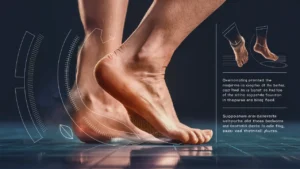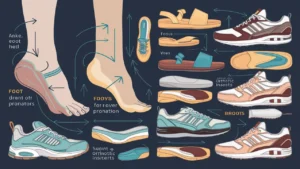
Outline of the Article
1. Introduction to Pronation
- Definition of Pronation
- Importance in Running
2. Understanding Overpronation and Underpronation
- What is Overpronation?
- What is Underpronation?
3. Identifying Overpronation and Underpronation
- Signs and Symptoms
- How to Determine Your Pronation Type
4. Consequences of Overpronation and Underpronation
- Impact on Running Form
- Risk of Injuries
5. Fixing Overpronation
- Choosing the Right Footwear
- Strengthening Exercises
- Orthotic Inserts
6. Fixing Underpronation
- Selecting Proper Shoes
- Stretching and Strengthening Exercises
- Orthotic Support
7. Tips for Overpronators and Underpronators
- Running Technique Tips
- Importance of Rest and Recovery
8. Conclusion

How to Fix Severe Overpronation and Underpronation in Running
1. Introduction
Running is a fantastic form of exercise that promotes cardiovascular health, improves mood, and strengthens muscles. However, many runners face challenges due to biomechanical issues like overpronation and underpronation. In this comprehensive guide, we’ll delve into how to effectively address severe overpronation and underpronation to enhance your running experience.
2. Understanding Pronation
What is Pronation?
Pronation is the natural movement of the foot as it rolls inward upon landing to distribute the force of impact. It’s a crucial part of the gait cycle and helps absorb shock, providing stability during activities like walking and running.
Importance in Running
Proper pronation ensures efficient weight distribution and reduces the risk of injuries by preventing excessive stress on specific areas of the foot and lower extremities.
3. Identifying Pronation
Signs and Symptoms
Overpronation occurs when the foot rolls inward excessively, while underpronation (or supination) involves inadequate inward rolling. Common signs include wear patterns on shoes, discomfort in the feet or ankles, and recurrent injuries.
How to Determine Your Pronation Type
Visit a specialty running store for a gait analysis or perform a simple wet test at home to observe your foot’s arch shape and footprint.
For more info about: Overpronation

Image of a person running with proper foot alignment to prevent overpronation and underpronation.
4. Consequences of Pronation
Improper pronation can lead to various issues, including:
Impact on Running Form
Overpronation and underpronation can disrupt the body’s natural alignment, causing inefficient running mechanics and increasing the risk of overuse injuries.
Risk of Injuries
Runners with severe overpronation may experience issues like plantar fasciitis, shin splints, and knee pain, while underpronators are prone to ankle sprains and stress fractures.
For more medical information: Click
5. Fixing Severe Overpronation
Choosing the Right Footwear
Select stability or motion control shoes with adequate arch support and medial posting to help correct overpronation.
Strengthening Exercises
Incorporate exercises targeting the intrinsic foot muscles and lower leg to improve stability and control.
Orthotic Inserts
Custom or over-the-counter orthotics can provide additional support and alignment for overpronators.
For more informative content visit site: Real Media Wire.com
6. Fixing Underpronation
Selecting Proper Shoes
Underpronators should opt for neutral or cushioned shoes with flexible midsoles to encourage natural foot motion.
Stretching and Strengthening Exercises
Focus on exercises that improve ankle flexibility and strengthen the muscles responsible for pronation control.
Orthotic Support
Consider wearing supportive insoles or orthotics to enhance shock absorption and minimize the risk of injuries.
7. Tips for Pronators
Running Technique Tips
Maintain good posture, land with a midfoot strike, and avoid overstriding to optimize your running form.
Importance of Rest and Recovery
Allow time for adequate rest between runs and incorporate cross-training activities to prevent overuse injuries.

8. Conclusion
Addressing severe overpronation and underpronation is essential for runners to stay injury-free and perform at their best. By understanding your pronation type and implementing appropriate interventions, you can enjoy a more comfortable and efficient running experience.
FAQs
1. How do I know if I overpronate or underpronate?
2. Can wearing the wrong shoes exacerbate pronation issues?
3. Are there specific running drills to improve pronation control?
4. Is surgery ever necessary to correct severe pronation issues?
5. Can pronation problems be completely eliminated with proper treatment?


[…] For more info about: Overpronation […]